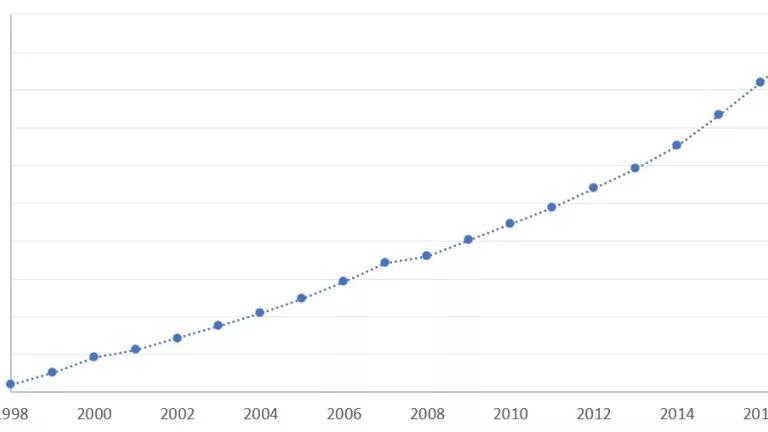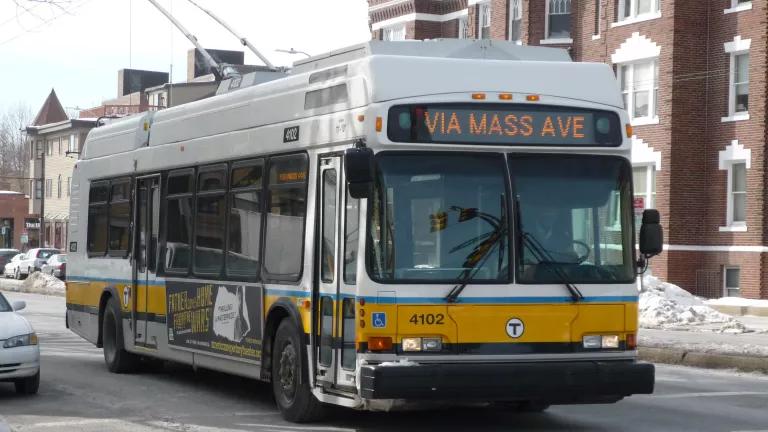The Hidden Cost of Cyber Monday

Source: U.S. Census Bureau, E-Stats 2017: Measuring the Electronic Economy
Have you seen the Cyber Monday deals this year? Deep discounts on smart TVs, blenders, and even a DNA test for your pet. And the best part, you don’t have to leave your sofa. Just browse and click, and two days later a package will arrive on your doorstep. But at what cost?
Sure, you may have a membership with free shipping or you spent enough to waive the fee, but you—and all of us—are still paying a hidden cost. We’re sacrificing the air we breathe for faster deliveries, but it doesn’t have to be that way. California is currently considering rules that will speed the adoption of zero-emission trucks, rules that should be strengthened to keep pace with consumer demand for online shopping.
Accompanying the rise in e-commerce is a rise in miles driven by commercial trucks. In 2017, e-commerce shipments accounted for over two-thirds of all manufacturing shipments. All this online shopping is snarling traffic, contributing to the worst congestions ever in most US cities, and leading to billions of gallons of unnecessary fossil fuel consumption. Trucks are disproportionately responsible for this problem.
These inefficiencies add up to more trucks spending more time running routes and belching toxins into our air. This is a major problem because fossil-fuel burning trucks are a leading source of carcinogenic pollutants and the greenhouse gases causing climate change.
E-Shopaholics
Since Cyber Monday was first conceived in 2005, it’s grown to become even more important than Black Friday. Consumers now prefer to shop online during the holidays and digital sales are expected to grow by 14-18 percent, raking in almost $150 billion over the roughly two-month holiday season.
But Cyber Monday is not a unique phenomenon. Online shopping has grown tremendously and in 2017 was responsible for over 9 percent of all retail sales.
Speedy delivery is essential to e-commerce competitiveness. According to one survey, 97 percent of shoppers are likely to become repeat customers after a positive experience with an online retailer and the majority define a positive experience by fast shipping speed.
In 2016, trucks made up the largest share of freight movement and by 2045 truck shipping by value is expected to almost double. The truck industry’s rise is being led by California, where shipments are projected to increase at the fastest rate in the nation.
Trucking on Empty
After that final checkout click and the confirmation notification pops up on your phone, a chain reaction is set in motion. A process that began with a manufacturer sending the product by some combination of boat, plane, train, or truck to a supplier, then trucking it to a store or warehouse to be tossed into the back of a delivery van with other orders and finally deposited on your doorstep. Often in two days.
In the rush to deliver directly to customers businesses are moving away from the single large truck delivery to retail stores, to many trucks—likely less than full—carrying the same amount of orders.
On top of that, 50 percent of trucks already travel empty on their return trip after making a delivery. Not only is this costly for businesses but it’s a massive source of unnecessary air pollution.
A Stronger Advanced Clean Truck Rule
So should we avoid those great deals and stop buying stuff online? That’s likely not going to happen. Consumers will be reluctant to give up the convenience of shopping from home. But policymakers need to step up and establish rules to slash emissions from the trucking industry even while online retail grows.
And that’s exactly what the California Air Resources Board is trying to accomplish. Under the recently proposed Advanced Clean Truck Rule, truck manufacturers would be required to sell zero-emission electric trucks as an increasing percentage of their California sales from 2024 to 2030. As its currently written, the rule would add about 75,000 electric trucks by 2030 in California.
That may seem like a lot, but compared to the 1.9 million on the road and the expected pace of growth, it falls woefully short. A stronger rule is needed—a stronger rule that better reflects changing consumer preferences that are responsible for are putting more diesel-burning trucks on the road.
Fortunately, there’s still time to improve the rule. Until December 9th the California Air Resources Board will be accepting public comments. Check out this article to see how the rule should be strengthened.
A quick and easy way to submit your comments is through NRDC’s action alert here. Or, you can send your own email to actruckcomment@arb.ca.gov. It’s as easy as clicking, “Buy now!”



